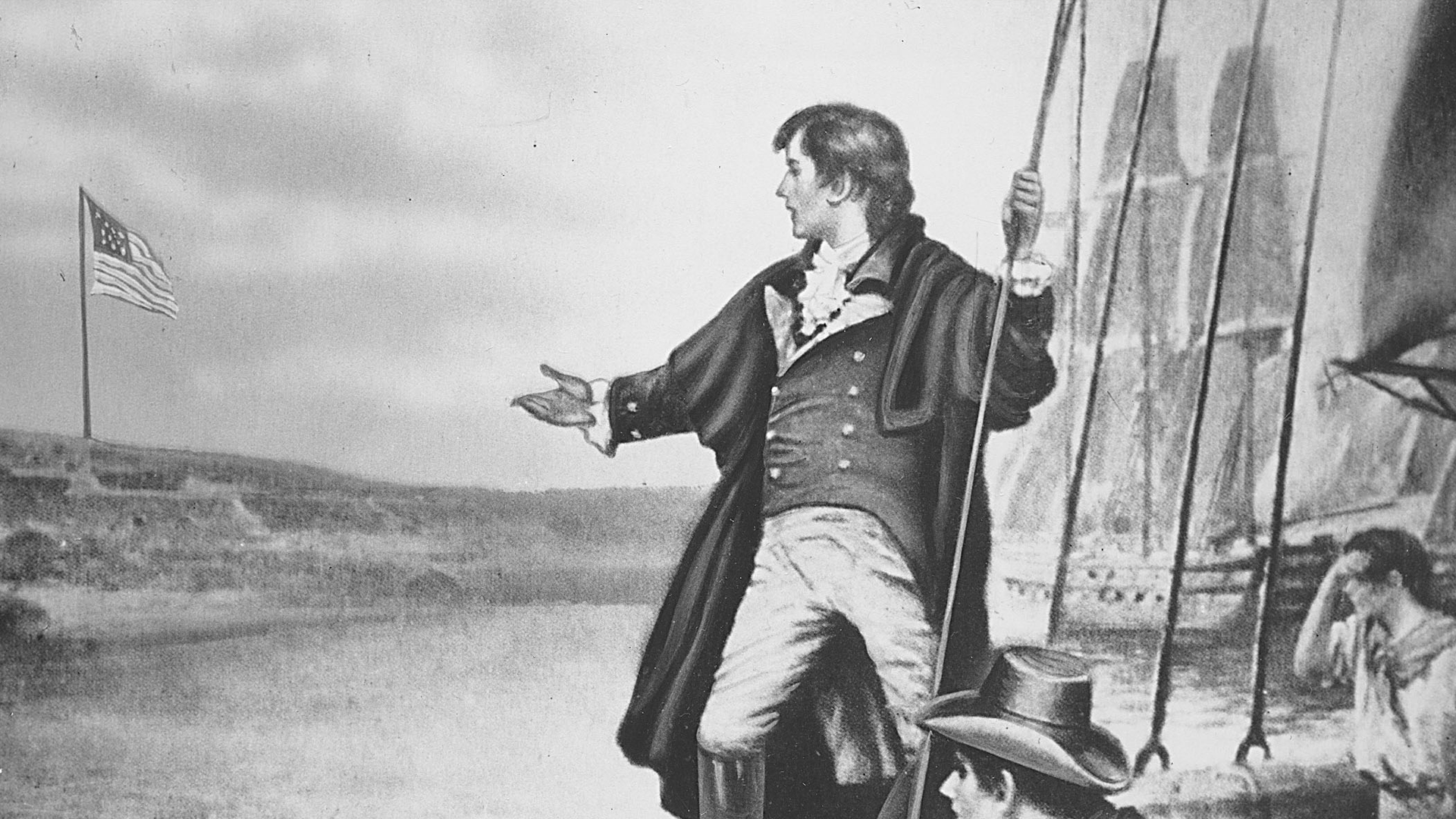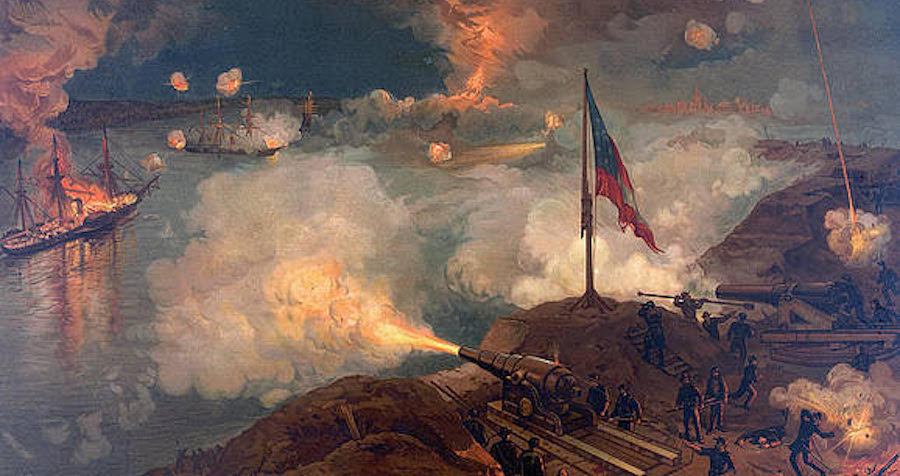Francis Scott Key Writes “The Star-Spangled Banner”

Dawn light over Fort McHenry with a huge 15-star, 15-stripe U.S. flag flying as smoke from the night bombardment clears over Baltimore Harbor.
What Happened?
The War of 1812 was raging: Britain had attacked U.S. trade, seized American sailors, and burned public buildings in Washington, D.C. Next on their list was the busy port city of Baltimore and its protector, Fort McHenry.
Francis Scott Key, a Maryland lawyer, boarded a British ship to negotiate the release of his friend, Dr. William Beanes. The British agreed—but made Key and Beanes stay aboard until after the planned attack so they couldn’t reveal troop positions.
From the harbor, Key watched rockets and shells arc toward Fort McHenry through the night of September 13–14. The fort took heavy fire, but the defenders held. In the flashes of explosions he could see an enormous 15-star flag still there.
At dawn, smoke cleared and the flag—sewn by Mary Pickersgill and so large it could be seen for miles—was still flying. Moved by the sight, Key began drafting a four-verse poem on the back of a letter.
Back in Baltimore, the poem was printed and quickly spread. It was soon paired with a well-known English melody, “To Anacreon in Heaven,” by John Stafford Smith—catchy, but notoriously tough to sing.
Through the 1800s the song gained meaning, especially after the Civil War as the flag became a symbol of national unity. The U.S. military adopted it for ceremonies in the 1890s, and President Woodrow Wilson endorsed it for official events in 1916.
On March 3, 1931, Congress made “The Star-Spangled Banner” the official national anthem. Most Americans sing only the first verse, the one that ends with the question: “O say, does that star-spangled banner yet wave…?”
Key lived a complicated legacy: a gifted writer and public servant but also a slaveholder who opposed abolition while criticizing some cruelties of slavery. Remembering both the inspiring anthem and the full context helps us read history honestly.
Today the original fort-flag survives at the Smithsonian. The anthem endures at games and ceremonies, inviting reflection on resilience, freedom, and the ongoing work of making the nation live up to its ideals.
Big picture: A night of fear turned into a song of endurance. The story reminds us that symbols gain power from the people who defend them—and that patriotism is strongest when paired with truth and responsibility.
Why It Matters
This moment turned a desperate night into a promise at sunrise. The anthem captures courage and resolve, but it also points us to the harder job: building a country worthy of the words we sing. Honest history helps growing citizens connect patriotism to action.
?
Why was Baltimore—and Fort McHenry—so important in the War of 1812?
How did a British club song become the melody for America’s anthem?
Why do we usually sing only the first verse, and what do the other verses say?
How does learning about Key’s views on slavery change how we talk about the anthem today?
What symbols today unite people the way the Fort McHenry flag did in 1814?
Dig Deeper
A narrated look at the bombardment of Fort McHenry and how it inspired the lyrics of the anthem.
Related

U.S. Geography: How the Land Shaped a Nation
Before the United States was born, geography shaped how people lived, worked, and fought over this land. From the Appalachian Mountains to the Great Plains, the natural landscape influenced settlement, culture, and history.

The Enlightenment: Revolution of the Mind
The Enlightenment wasn’t just an era of smart people in powdered wigs—it was a radical shift in how humans understood power, truth, and their place in the world. Its ideas fueled revolutions, rewrote constitutions, and laid the intellectual bricks of modern democracy.

The 13 Colonies: Seeds of a New Nation
How did thirteen scattered colonies along the Atlantic coast grow into the foundation of a new nation?
Further Reading
Stay curious!
